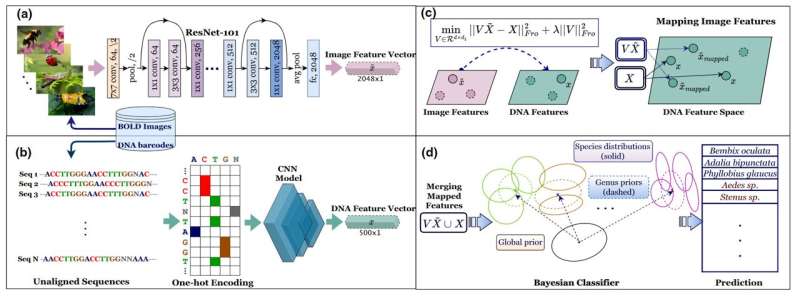This article has been reviewed according to Science X's editorial process and policies. Editors have highlighted the following attributes while ensuring the content's credibility:
fact-checked
peer-reviewed publication
trusted source
proofread
Researchers use AI to innovate insect discovery

A team of researchers at the IUPUI School of Science have developed an innovative use of Artificial Intelligence to discover new species of insects.
The group, led by Dr. Christine Picard, a professor of Biology, and Dr. Murat Dundar, a professor of Computer Science aims to reduce the amount of time it takes to discover species. The process of insect discovery is currently time consuming because of how few experts there are in the field, and with factors such as climate change and habitat destruction, scientists are running out of time.
"Only about 20% of insect species have been described, as in people know they exist," Picard said. "There are 80% of insect species that remain unknown. That's a big problem. We're losing species before we can identify them, and we don't know what their impacts are in the ecosystem."
Picard and Dundar's team found the solution in AI by successfully leveraging a combination of state-of-the-art computer vision and machine learning techniques, along with a vast amount of insect image and DNA data, to distinguish between known and unknown insect species.
Dundar says their approach was designed to tackle the real-world challenges of insect identification whereas current traditional methods are limited to recognizing only known species. The AI was trained to not only identify known species but then also distinguish them from unknown ones.
"In the past, such AI mechanisms would have classified any unknown specimen as an outlier, indicating that it doesn't belong to anything that exists. Our method can now accurately categorize these specimens, providing insight into where they fit within the existing taxonomy," said Dr. Sarkhan Badirli, the lead author of the study conducted during his time as a graduate student at IUPUI.
The work is published in the journal Methods in Ecology and Evolution.
More information: Sarkhan Badirli et al, Classifying the unknown: Insect identification with deep hierarchical Bayesian learning, Methods in Ecology and Evolution (2023). DOI: 10.1111/2041-210X.14104
Journal information: Methods in Ecology and Evolution


















